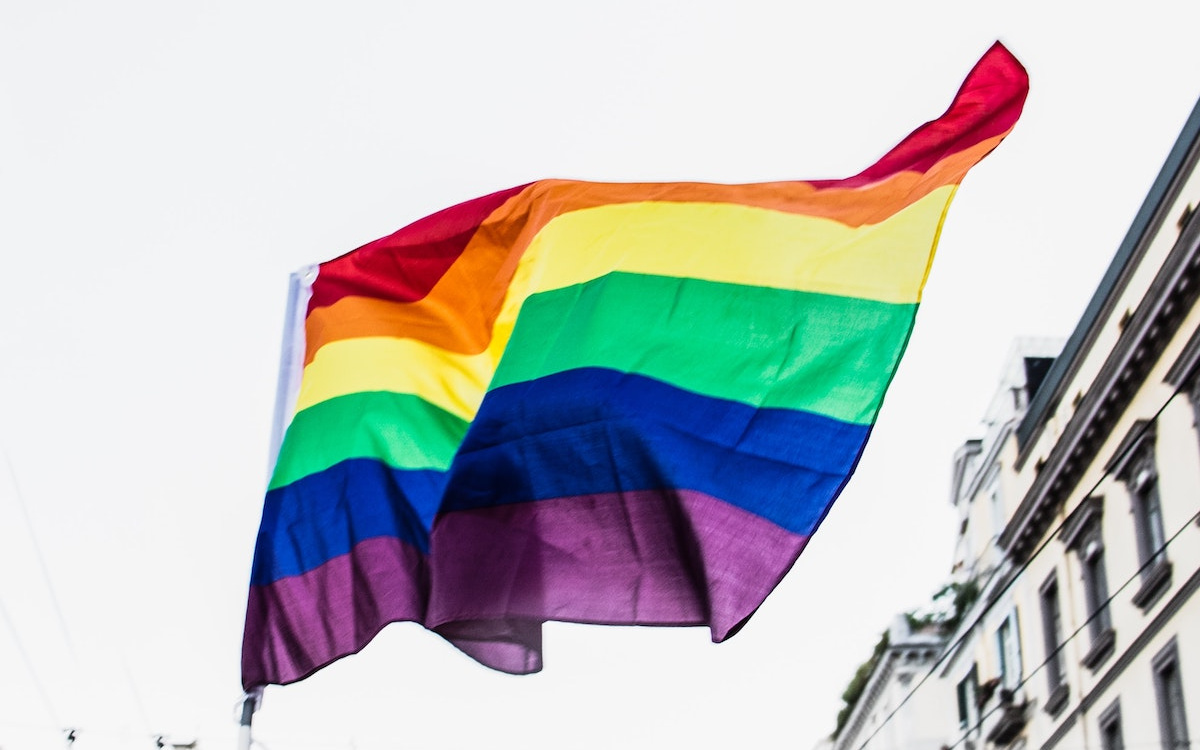
As Gilbert Baker explained in his posthumously published autobiography, “the rainbow came from earliest recorded history as a symbol of hope. In the book of Genesis, it appeared as proof of a covenant between God and all living creatures.”
When people found out that Gilbert Baker came from Kansas, they often jokingly asked him, “Oh, are you a friend of Dorothy?”—an allusion to the central character in The Wizard of Oz that held double-meaning as a codeword for a queer identity. He always replied: “I am Dorothy!”1 As a child, Gilbert struggled to reconcile his deep Methodist faith with his queer identity confined by the strict culture of conformity of Parsons, Kansas during the 1950s. His grandmother owned a women’s clothing shop, and Gilbert proved an adept student of sewing and the intricacies of fabrics. Unlike the other boys in Parsons, he dared to dream of a career as an artist. In 1970, the Vietnam War carried Gilbert Baker into military service. He served as an army medic in San Francisco, and his introduction to the city’s queer community reawakened Baker’s creativity and spirituality.
In the early days of the LGBT+ liberation movement, leaders like Harvey Milk initially rallied around the pink triangle as a symbol of Gay Pride to reclaim it from its past as a symbol of hate in Nazi Germany. In 1978, Milk commissioned Baker to create a flag for San Francisco’s Gay Freedom Day Parade. For Baker, the pink triangle failed to reflect the radiant diversity of his queer community. He realized the rainbow represented the only logical choice for a banner. As Gilbert Baker explained in his posthumously published autobiography, “the rainbow came from earliest recorded history as a symbol of hope. In the book of Genesis, it appeared as proof of a covenant between God and all living creatures.”2 As he meditated on the rainbow’s centrality in Chinese, Egyptian, and Native American history, Baker decided that a Rainbow Flag emblazoned more inclusivity than the pink triangle.
The Rainbow Flag had its coming out celebration on 25, 1978, with strong winds from San Francisco Bay carrying the colors aloft in the morning sun. More than 250,000 people thronged the streets, and Baker recalled that “it completely astounded me that people just got it, in an instant, like a bolt of lightning—that it was their flag. It belonged to all of us.”3
Gilbert Baker passed away in 2017, but refulgent spectrums of the Rainbow Flag proliferate worldwide as banners of inclusivity, pride, and renewed hope that the dreams that you dare to dream, really do come true.
1 Gilbert Baker, Rainbow Warrior: My Life in Color (Chicago: Chicago Review Press, 2019), 3.
2 Gilbert Baker, Rainbow Warrior, 37.
3 Matt Hanne, "Reflections on an “Unfinished Flag” - Gilbert Baker Writes on the 30th Anniversary of the Rainbow Flag." The Liberty Press, June 2008. 40.